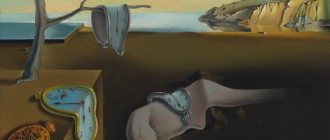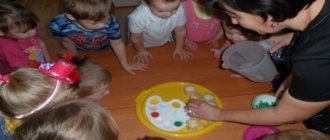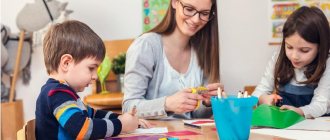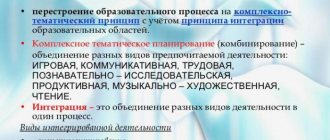Why do you need a plan?
Of course, as you learned from the last paragraph, there is no point in making such a plan, for example, if you want to set yourself the goal of buying a wardrobe. Nobody will postpone the purchase for fifteen years.
But if you want to buy an apartment, a car, save up for a trip around the world or study at a prestigious university abroad, then such a plan is especially suitable for you. Let us repeat once again: long-term is long-term, which means you need to write down the points to achieve the goal for three or more years in advance, dividing them into small subtasks.
It’s easiest to follow a plan when it’s broken down into sub-points: earn 50 thousand every month, invest 100 thousand every six months, etc. Small goals seem more achievable and with each step they bring you closer to the main task.
Also, you shouldn’t try to earn a million in three years if you get a couple of tens of thousands a month without taking into account food, utilities and other needs. Carefully weigh all the pros and cons before drawing up a plan, work it out to the smallest detail, take into account unforeseen force majeure situations, and then the result will satisfy you 100%.
Below is an example of a long-term plan, the goal of which is to buy a car worth one million rubles within four years. Of course, this should be without credits and loans.
Long-term work plan calendar and thematic planning
Topic: Transport, road and us.
Goal: Enriching children's understanding of the variety of types of public transport and its work.
Tasks:
include children in joint planning of activities on the topic;
expand children's horizons on the topic;
activate and enrich children's vocabulary on the topic;
develop children's powers of observation and the ability to classify according to several criteria;
update and enrich children’s ideas about the rules of safe behavior on the road;
develop verbal and logical thinking, attention, imagination.
Final product:
album “Machines of the city of Yeniseisk”,
event: together with parents, making a model of the road leading to the kindergarten.
12.11.18
| Structural Components regime Types of children's activities | Types of educational activities | Reflection | ||
| Joint activities of teacher and children | Independent activity of children (conditions) / Conditions for SDPiD | Cooperation with families of pupils (Inclusion in OD) | ||
| Morning | Morning gathering. Discuss what new happened over the weekend? Question: “What did you drive to kindergarten?” | place informational stickers in the reception area with statements from children during morning assembly. | ||
| GCD | Tradition "Smile" The world around us “Introduce the classification of land, air, and water transport. Introduce new words: names of transport (motor ship, trolleybus, tram, metro) transport.” Physical education according to the instructor's plan. | Introduce new toys for games | The guys suggested making a road for new cars. | |
| Walk | Observation: the weather of the day - select definitions that characterize it, enrich the vocabulary, develop observation skills. Outdoor game: “You drive more quietly, you will keep going” - to develop attention and speed reaction to the signal. | Games with external material | ||
| Dinner | M\P game "guess what you wished for." | |||
| 13.11.2017 Afternoon | Invigorating gymnastics. Visual activity: Drawing company cars Didactic game: “Answer quickly” - cultivate quick thinking, practice classifying objects. | Place illustrations and models of various types of ground transport in a corner of the book for independent discussion. | ||
| Walk | Cloud Watching (What are they like) Walk around the garden. Notice what has changed? | Games initiated by children. | ||
| Evening | Discuss the plan for the next day | Child-initiated games | to acquaint parents with the children's initiative to create the album “Machines of the City of Yeniseisk”. invite parents to identify their resource for this work | |
13.11.2018
| Structural Components regime Types of children's activities | Types of educational activities | Reflection | ||
| Joint activities of teacher and children | Independent activity of children (conditions) / Conditions for SDPiD | Cooperation with families of pupils (Inclusion in OD) | ||
| Morning | Morning gathering Conversation “Discussing with children a safe route from home to kindergarten - clarifying the names of city streets, rules of behavior on the street, traffic rules.” Didactic game: “Learn to be a pedestrian” -enrich children’s knowledge about the rules of behavior on the street. | Working with parent initiatives | ||
| GCD | Tradition "Smile" Speech culture “Transport” - reinforcement of sounds, game “say the opposite” Reading fiction by B. Zhitkov “Traffic Light” | Game “Building a Ship” - develop constructive skills, the ability to distribute roles | ||
| Walk | Observation: Seasonal changes in nature, bird watching Literary word: “How to get the anchor” - clarify knowledge about water transport, enrich children’s reading experience. Outdoor game: “Burners” - develop attention, exercise speed and dexterity. Labor activity: help the teacher pour food for the birds, cultivate hard work. | Games with external material | ||
| Dinner | D\I “Guess what you wished for” | |||
| Afternoon | Invigorating gymnastics Making an album from brought photos | Suggest stencils on the topic of transport | ||
| Walk | Games initiated by children. | |||
| Evening | "Red, yellow, green" - clarify knowledge about traffic lights, develop thinking and attention. | . Child-initiated games | Agree on a coordinator for working with the album from parents Individual conversations and consultations at the request of parents. | |
14.11.18
| Structural Components regime Types of children's activities | Types of educational activities | Reflection | ||
| Joint activities of teacher and children | Independent activity of children (conditions) / Conditions for SDPiD | Cooperation with families of pupils (Inclusion in OD) | ||
| Morning | Morning gathering Conversation: “We are pedestrians” - to clarify knowledge of some road signs, to clarify the knowledge that all traffic in the city is subject to special rules, an idea of the work of traffic police officers. | “What first, what next” - to develop logical thinking and imagination. | Post a consultation “Children on the roads” Discussion of the possibility of jointly creating a layout “The Road to Kindergarten” | |
| GCD | Musical activity FEMP “We are traveling by bus” Orientation in space, to develop the ability to distinguish the opposite signs of objects. Develop imagination, logical thinking, emotional sphere and hand motor skills. | |||
| Game hour | Game "Traffic Light" - Expand knowledge about traffic rules. Learn to recognize road signs | Contribute for the role-playing game “Traffic Light” Attributes: road signs, policeman's cap; layout of an intersection with transport, pedestrians, (dolls). Circles of three colors (red, yellow, green, indicating the colors of the traffic light. | We work with parents’ questions and suggestions regarding the layout. | |
| Walk | Observation: “What do we see on the road?” — Playing out situations involving crossing the roadway. Literary word: S. Marshak’s poem “Bus number twenty-six” - To foster a culture of behavior in public transport. Outdoor game: “Pedestrians and cars” - Reinforcing traffic rules with children. . | Children's independent games in the area. | ||
| Dinner | We read fairy tales of the children's choosing. | Looking at illustrations. | ||
| Afternoon | Invigorating gymnastics Reading fiction: “Rules of behavior on the street” - Reinforce the rules of behavior on the street. Didactic game: “Behave correctly on the street” - consolidate children’s knowledge about traffic rules for pedestrians, cultivate respect and desire to comply with them. | Walking on ribbed paths Guess the transport" - consolidate ideas about transport, develop thinking and speech activity. | ||
| Evening | Child-initiated games Learning the rhyme: “Stop the car, stop the engine!” | |||
| 15.11.2018 | ||||
| Structural Components regime Types of children's activities | Types of educational activities | Reflection | ||
| Joint activities of teacher and children | Independent activity of children (conditions) / Conditions for SDPiD | Cooperation with families of pupils (Inclusion in OD) | ||
| Morning | Morning gathering (circle) Conversation: “Traveling along the street” - Expand children’s knowledge about the street, be able to find similarities and differences between the street and the road. | Rubric “Learn with children”: offer parents a selection of poems on the topic of the week. | ||
| Game hour | 1. Game hour Child-initiated play | Didactic game: “Building a street” To consolidate and expand children's knowledge about the construction profession. Strengthen your knowledge of traffic rules. | ||
| GCD | 2. Physical education 3. Construction of “Our Street” | Communication situation “What do you need to know if you are alone on the street?” — Develop caution, attentiveness, independence, responsibility and prudence on the road. | ||
| Walk | Observation: weather - Invite children to describe the weather, talk about wind, precipitation, and the sun. Help write short stories about who likes what kind of weather. Outdoor game: “Our Street” - Attaching road signs and following traffic rules. Labor activity: Encourage children’s desire to maintain order on the site, help organize work, select equipment. Individual work: Improve the technique of performing movements. | Independent activity: Take-out materials: balls, steering wheels. | ||
| Dinner | Reading books at the request of children Orientation in space” - consolidate the ability to navigate in space using the words “right”, “left”, “above”, “below”, “between”; practice measuring length using a measuring stick; practice counting. | |||
| Afternoon | Invigorating gymnastics Invigorating gymnastics: Didactic game: “Where do the little animals play?” — consolidate children’s knowledge about the dangers of playing near the roadway, teach them to anticipate danger in a given situation. Individual work: Making attributes for games: steering wheels, baton, traffic light. | Walking along massage paths Adding materials for making attributes for the game “Our Street”: road signs. | ||
| Evening | P/n “find and keep silent” | to clarify the specific participation of parents in the joint production of a road model on Friday. | ||
| 16.11.2018 | ||||
| Structural Components regime Types of children's activities | Types of educational activities | Reflection | ||
| Joint activities of teacher and children | Independent activity of children (conditions) / Conditions for SDPiD | Cooperation with families of pupils (Inclusion in OD) | ||
| Morning | Situational conversation: “What kinds of machines are there?” - give children an idea of special-purpose machines; learn to identify such machines and their significance. Individual work: assemble a street from cubes. | Didactic game: “Smart cars” - to consolidate children’s ideas about transport; develop ingenuity and quick thinking; cultivate a desire to comply with traffic rules in life. Reviewing and coloring on the topic of traffic regulations “Road Safety” - to reinforce the rules for crossing the roadway, the dangers of playing near the road; develop fine motor skills of the hands. | Communication on the topic of joint activities | |
| Game hour | Role-playing game: “Car showroom” - teach children to write a description of cars according to the plan proposed by the teacher; cultivate cultural communication skills and develop speech. | |||
| GCD | Musical activity Artistic work “Cars driving down the street” modeling from plasticine, reinforcing the basic concepts of car parts . | |||
| Walk | Observation: “Road signs and markings” - teach children to identify signs, reason why a given sign is needed here, what would happen if it wasn’t there; develop children's thinking, memory, speech. Artistic word: V. Suslov “His signal is the law for everyone” - to develop attention. Outdoor game: “You are big, I am small” - to form careful behavior on the street and roadway, using traffic rules. Individual work: pass the ball to someone else - throws from behind the shoulder. Independent activity: games at the request of children. | |||
| Dinner | ||||
| Afternoon | Joint activity of children and adults “The Road to Kindergarten” | Joint activity of children and adults “The Road to Kindergarten” | ||
| Walk | ||||
| Evening | Didactic game: “Who can name the most cars” - consolidate children’s knowledge about cars (trucks, cars, special ones); develop memory; replenish children's vocabulary with new words. Individual work: “Sort out the pictures by type of ground transport | Walking along massage paths. Performing shading and various graphomotor tasks. | ||




